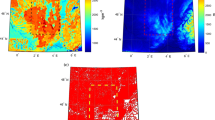Abstract
We became interested in investigating the origin of the length of the metre as a basis of the metric system after reading Ken Alder’s 2002 book “The measure of all things”, where we learnt that the metre we use in all our length measurements is about 0.2 millimetres shorter than it was supposed to be. That does not sound like being too far off, but when one realizes that the metre was supposed to be one ten-millionth part of the Earth quadrant, the 0.2 mm translates to a 2 km error in the Earth quadrant. Even with the instruments available at the end of the eighteenth century, when these geodetic measurements were carried out by a couple of French geodesists, the error of 2 km in the Earth quadrant was a little too large to expect. Particularly so as both these gentlemen, Méchain and Delambre, had a reputation of being excellent and very careful observers. When we read in the two geodesists’ 1806 Opus Magnum, Base du système métrique décimal ou mesure de l’arc du méridian, that Legendre, when he compared their 1806 results with the results of their predecessors and contemporaries, said: “I’d suspect the irregularities of the local [gravity] attraction on the plumb-line [to be at play here]”, our interest was definitely aroused. Indeed, the analyses described in this paper confirm Legendre’s suspicion: while the error due to the neglect of gravity field is responsible for about 95% of the total error, the error in the meridian length measurements amounts to less than 2% of the total error and the error due to a wrong assumption of the Earth’s shape contributed about 3% of the total error. If the careful work of Méchain and Delambre was the only source of error, the metre nowadays would be too long only by less than 4 μm instead of being short by 197 μm. The bulk of the difference is made by not taking the effect of gravity field into account; that they could not have done because the needed gravity field features were not yet known.

Similar content being viewed by others
References
Alder K (2002) The measure of all things. Simon and Schuster, New York, p 445
Gullberg J (1997) Mathematics: from the birth of numbers. W.W.Norton & Co., New York, p 1093
International Association of Geodesy (1981) Geodesist’s Handbook 1980, also known under Bulletin Géodésique 54/3
Méchain PFA, Delambre JBJ (1806) Base du système métrique décimal ou mesure de l’arc du méridian. Institute National, Paris
Moritz H (2000) Geodetic Reference system 1980. J Geod 74(1):128–162
Nicollet JN (1828) Memoir on a new calculation of the latitudes of Montjouy and Barcelona. In: The quarterly journal of science, literature and art, January to June, 1828. The Royal Institution of Great Britain, Henry Colburn Publisher, London
Pavlis NK, Holmes SA, Kenyon SC, Factor JK (2012) The development and evaluation of the Earth Gravitational Model 2008 (EGM2008). J Geophys Res 117:B04406. https://doi.org/10.1029/2011JB008916
Spiegel MR (1968) Mathematical handbook. McGraw, New York, p 271
Vaníček P, Krakiwsky EJ (1986) Geodesy: the concepts, 2nd edn. North-Holland, Amsterdam, p 697
Acknowledgements
The authors would like to thank Professor Ken Alder for his effort to bring to the attention of geodesists and other professionals, the 210-year-old (as of now) geodetic mystery and for writing his very interesting and successful book. We would like to take this opportunity to express our astonishment over a complete lack of interest by the French Academy of Science to clear the reputation of its two late members, MM. Méchain and Delambre and that of its own. Last but not least, we wish to thank Professor Vermeer for bringing Nicollet’s work to our attention and a couple of anonymous reviewers for their thoughtful comments that helped very much to improve the paper. They had also driven us well beyond the point we ever wanted to go to follow-up on our thesis.
Author information
Authors and Affiliations
Corresponding author
Appendix: Derivations
Appendix: Derivations
The B in Eq. (3) is an “elliptical integral” multiplied by (1 − e2). Such an integral is solvable only through the development into a series of the sub-integral function \( \left( {1 - e^{2 } \sin^{2} \varphi } \right)^{{\frac{ - 3}{2}}} \). The sub-integral function is of the type \( \left( {1 + \alpha } \right)^{p} \) where \( \alpha = - e^{2 } \sin^{2} \varphi \) is quite small and p = − 3/2 (not an integer). Such functions can be developed into a series by the use of binomial theorem (Gullberg 1997) which reads
where
Thus, we can write, to a sufficient accuracy:
Substituting this back into Eq. (3) we get
The individual integrals in this series can be now evaluated. We get (Spiegel 1968):
After substitution back in Eq. (A4), these terms become quite complicated functions of φ1 and φ2 and we shall not show them here.
On the other hand, if we seek the length of the whole elliptical quadrant, and thus integrate within the limits of 0 and π/2, all terms containing sin2φ and sin 4φ will disappear. The term \( \sin^{5} \varphi \cos \varphi \) will also disappear as it equals to 0 for the two limits. Substituting Eqs. (A5) to (A7) into Eq. (A4), we obtain
which can be rewritten as
Taking care of the multiplication factor \( \left( {1 - e^{2} } \right) \) in front of the integral, we get the full expression for B(e;0,π/2) = C(e):
We note that the first (leading) term in this equation is nothing else but a quadrant of a unit circle!
Rights and permissions
About this article
Cite this article
Vaníček, P., Foroughi, I. How gravity field shortened our metre. J Geod 93, 1821–1827 (2019). https://doi.org/10.1007/s00190-019-01257-7
Received:
Accepted:
Published:
Issue Date:
DOI: https://doi.org/10.1007/s00190-019-01257-7




